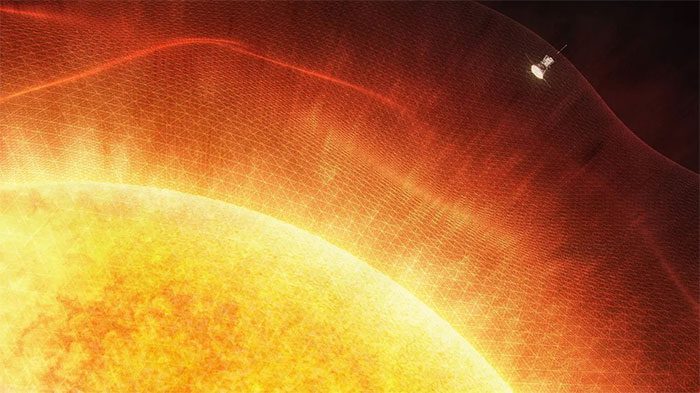The Parker Solar Probe from NASA has become the first spacecraft to fly through a coronal mass ejection (CME) from the Sun, capturing the entire event on camera.
Images captured by the Parker Probe while flying through the CME. (Video: Johns Hopkins University Applied Physics Laboratory).
The footage shows the Parker Solar Probe barreling straight through a massive solar eruption on September 5, 2022. The probe traveled through the edge of the plasma wave before emerging on the other side. Through this groundbreaking research, scientists can learn more about the inner dynamics of the Sun, allowing for better predictions of eruptions that threaten Earth. They published their findings exactly one year later (September 5, 2023) in the Astrophysical Journal, according to Live Science.
“This is the closest we have ever observed a CME,” said Nour Raouafi, a scientist working on the Parker Solar Probe project at the Johns Hopkins University Applied Physics Laboratory in Maryland. “We have never tracked such a major event at this distance.”
CME refers to explosive bursts resembling smoke rings from sunspots, which are areas on the Sun’s surface where strong magnetic fields, created by charged particle currents, twist and suddenly break apart. When expelled, CMEs move at millions of kilometers per hour, carrying charged particles from the solar wind to form a combined wavefront.

The probe traveled through the edge of the plasma wave before emerging on the other side.
The Parker Solar Probe was launched towards the Sun in August 2018. The spacecraft is equipped with a heat shield and radiators for close encounters with the Sun. Parker was flying at an altitude of 9.2 million kilometers above the Sun’s surface when its camera detected the CME sweeping by. Shortly after, the spacecraft plunged headfirst into the protruding edge of the plasma wave, with solar wind rushing through its lens.
The probe underwent two days of observations of the solar eruption, allowing physicists to study the evolution of the CME in detail. They discovered three stages in the eruption process. The first two stages involved shock waves and plasma, accompanied by solar wind, which had been observed previously. However, the third stage involved slower-moving particles that puzzled them.
Understanding the mechanisms behind solar eruptions is crucial for protecting Earth from severe geomagnetic storms. Although Earth’s magnetic field can absorb most CMEs, strong geomagnetic storms can cause satellites to fall to Earth, ignite electrical systems, and disrupt the Internet.





















































